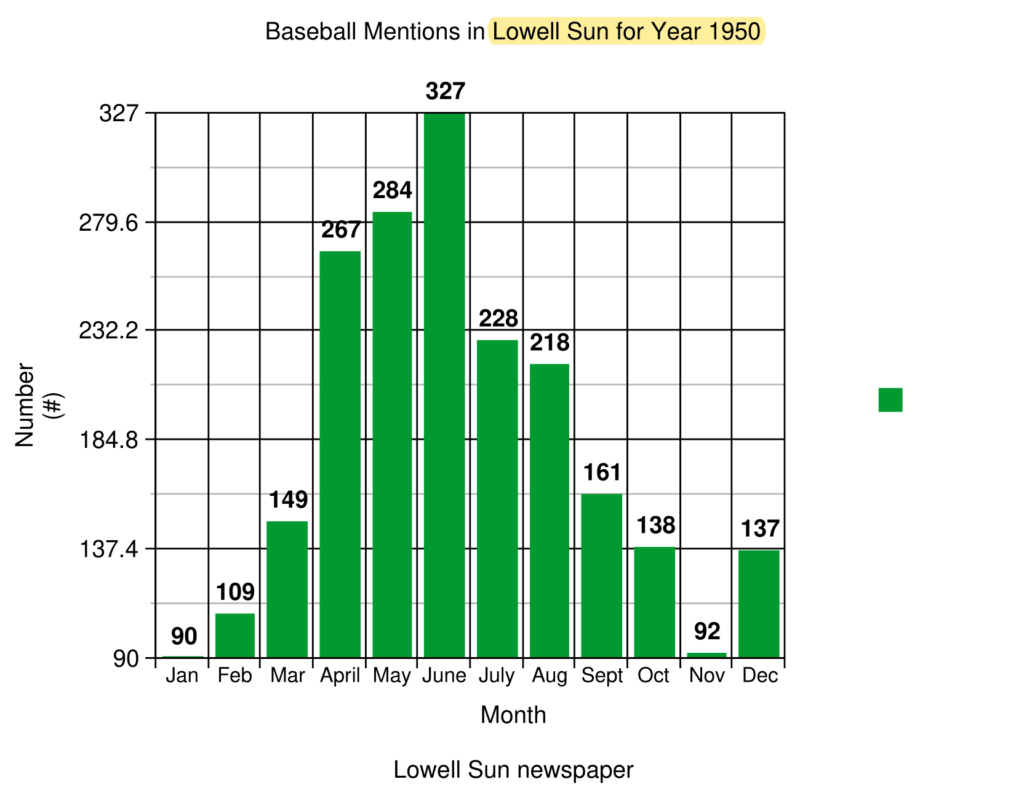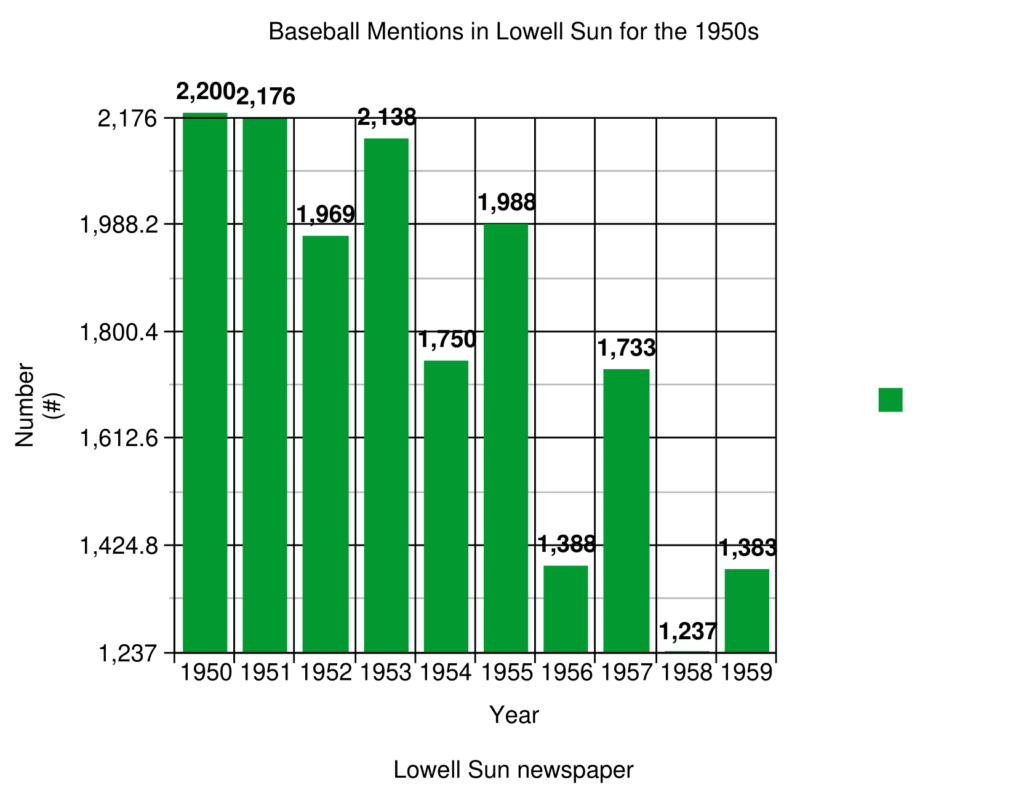For anyone hoping to discover missing links in the recorded lives of a grandparent, a historical figure or a school friend, there is no better approach than to search the archives of the town newspaper where that person might have lived. There exists today many websites that are dedicated to the storage/acquisition of on-line, archival information (available in digital form) regarding newspaper stories and events dating back to the year 1700 and before.
In this set of memoirs, I have often used the site called Newspaper/Archives to uncover useful and interesting data from years ago that can enliven the tone of any long-forgotten, family history. Such archives are also very useful in discovering the appearance of key words/concepts found in our daily speech such as: baseball, Red Sox, Depression, novena,horseshoe, judo, clunker, tailspin or Elvis Presley, for example.
A newspaper reporter or author might like to include a brief reference to a related article on a topic, which could further interest the reader in the flow of his/her story. Again, I have often made use of historical databases to bolster a story or saga.
Example
Lowell, Massachusetts is located about 28 miles from Boston, a town well known for its interest in sports such as baseball, hockey and basketball. Stories about the Red Sox, the Bruins and the Celtics did abound in the Boston Globe, the Record-American and, also, in the Lowell Sun, my hometown paper. In an incident dating back to 1950, three years before the death of my father, my interest in Ted Williams was simmering to the top of my baseball queries. He and the NY Yankee star, Joe DiMaggio, were often being compared by the Boston sports writers for their excellent displays of baseball acumen. Who was the better player? Who might the selected to the Baseball Hall of Fame? Although comparisons are odious according to John Lydgate, Oscar Wilde and, also, Cervantes , in this case, for the integrity of that hallowed game, comparisons were not only good but necessary. In our American style of binary judgment, one player had to be declared the best. It might be considered unpatriotic to do otherwise.
My start in the wide, wide world of baseball knowledge focused on reading the sports pages of the Record-American, a Boston rag considered by the more erudite readers of the area as inferior to the Boston Globe. However, as an eleven-year-old, new, baseball enthusiast, the Record-American’s rough, nitty-gritty type of sports talk seemed to satisfy my primal need for the not-so-genteel aspects of the game. However, my seven-year-old brother, Bob, preferred the Yankees to the Red Sox, so maybe DiMaggio was a better player than Williams, after all. Certainly, my thinking skills were in need of some serious revamping.
The game of baseball as practiced in all the parks of the major leagues across the nation is played according to standard rules and regulations, which, we, kids, on Dana Street off Ludlam Street generally followed except for the start and finish dates for the year in question. Usually, the major league teams played ball from late April to late September but, we played the game any time the New England weather permitted, which could happen in February or even around Thanksgiving. A small, dirty snowbank covering a sidewalk could be used as first base, which usually proved convenient. The cobblestone nature of Dana Street added a special flavor to the game, especially, regarding hard-hit ground balls. Only a seasoned amateur player could handle these without suffering an embarrassing rebound to the groin. “Ouch! That hurts!”
To follow the activities of a favorite team in a league, a fan needed to follow the daily scores of that team over the entire season, which lead to a pennant race in both the American and the National Leagues. Professional baseball is a six-month slug-fest of warring teams each seeking to win the pennant in their own league and then fighting the winning team from the opposite league in a seven-day playoff called the World Series. It is the team with the best 4 out of 7 games that finally is the overall best in the majors. Only the intrepid and psychologically robust enthusiast can go through the agonizing months of nail-picking and sleepless nights.
Tracking a Team’s Activity over the Year
If I had wanted to become a real baseball super-fan, I would have tracked my team’s win-lost averages in the pennant race item of the Lowell Sun daily newspaper every day of the year. To get a healthy start on this challenge, I might have started by asking the question: “How often does the Lowell Sun mention the word “baseball” in each edition of the newspaper per day and present this information to me for each month of the year.” For the year of 1950, the results would have looked like the following:

According to this graphical display shown above, the greatest interest in baseball for the year 1950 happened in June of that year with a total of 327 mentions of “baseball”. No other month showed as many mentions of that sport. Also, the graph shows a sharply increasing, reported interest in the game from May to June, which might be understood as proof that the general, national enthusiasm for the game as reported by the Lowell Sun, an API newspaper, was very positive. However, this rising interest might also have been due to a sharp increase in wins by the two local teams at the time, i.e., the Red Sox and the Braves. These data, by themselves, give no underlying reason for the behavior shown.
The focus that my hometown newspaper brought to the subject of “baseball” varied quite wildly each year from January to December. This observation is, however, not surprising to the baseball fans spread across the country since the official game of major league baseball has three designated periods of interest: a spring training period from February to mid-April; a 5 to 6 month period of official play extending into the week of the World Series and; finally, the post-season period when team owners reevaluate their successes and losses of the last season. It is also at this time when player exchanges among the different teams happen and when team scouts are appraising the performance of minor league players that might earn them an entry into major league baseball as rookie players in next year’s season.
More on the Statistical Data Regarding the Game of Baseball
The database called Newpaper/Archive, which I used, again and again, in preparing bar charts showing the time-related evolution of selected historical features (Example: number of mentions of words like “baseball”, “roomers”, “graduates”, etc.) permits the user to act like an archeologist of ancient nuggets of information dating back several centuries in some cases. In the previous example, I was interested in the nitty-gritty aspects of professional baseball activity for the year 1950. However, I might also have asked: “How often did the Lowell Sun report stories on baseball from 1950 through 1959?” “Was there a noticeable change in the number of baseball stories during that time period?” Also, the researcher might ask himself/herself: “What did the sudden decline in baseball articles from 1955 to 1956 tell club owners and fans on the future of the game?” Finally, the results given for 1958 seem out of place. In this case, the researcher would then need to further focus on the monthly details of reported events for 1958. However, this exercise lies outside the scope of the present overview.

Finally, the reader is encouraged to study and understand the significance of the many other graphical displays – see other pages – showing the time-related characteristics regarding historically important aspects of several topics. These related graphs were generated using the same approaches as those shown above.
